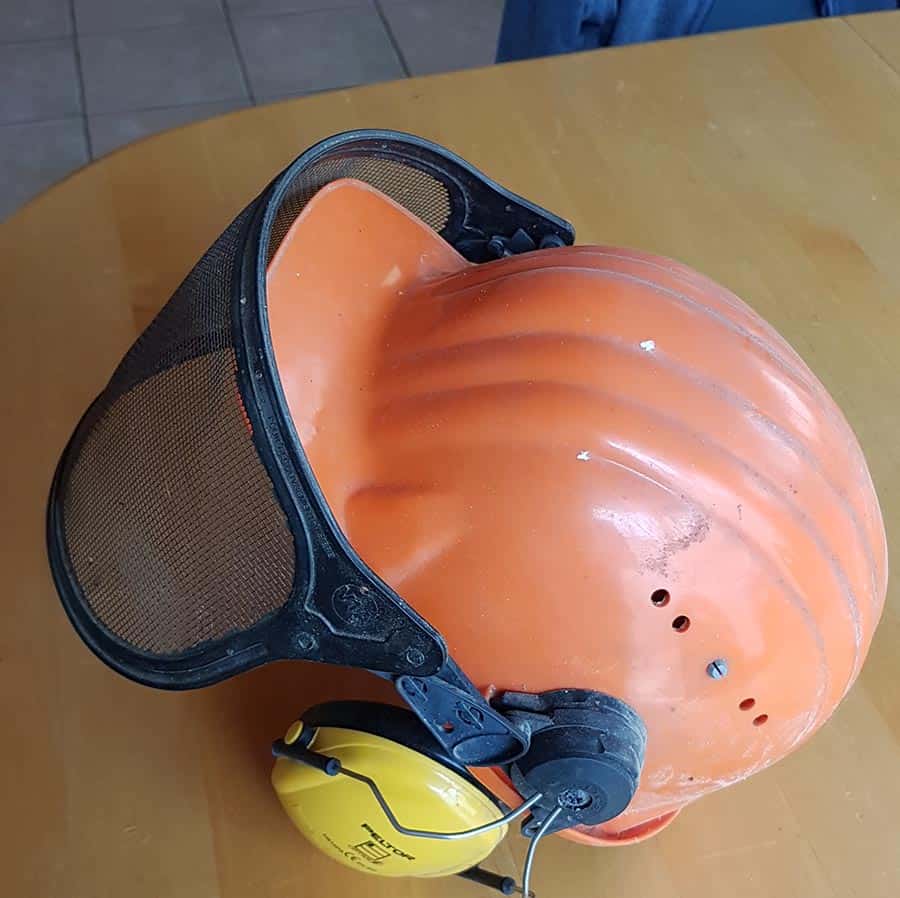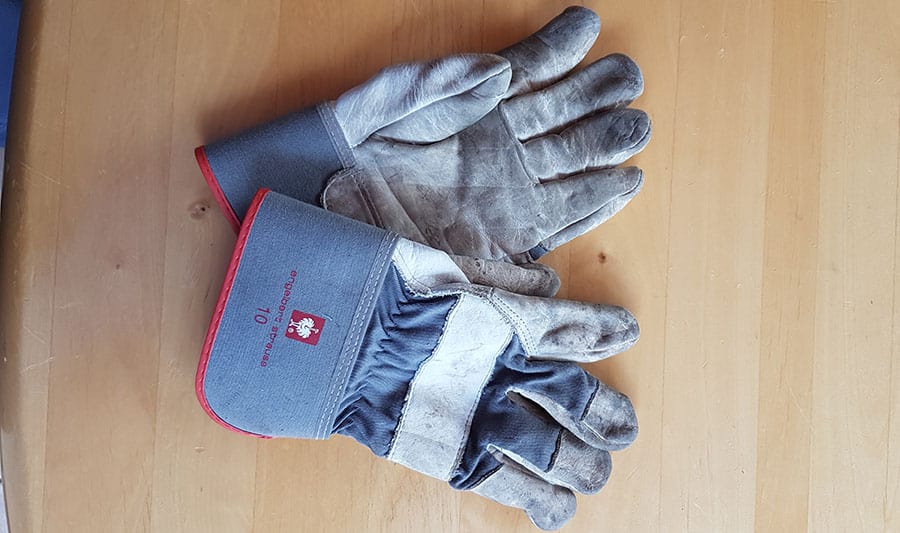For many, fall is the season for last-minute lawn maintenance before winter. If you’re looking for a power tool that can target hard to reach areas, a weed wacker may be a good choice. However, if you’re new to weed trimmers, you may worry it will cut down more than weeds, perchance, even a finger.
A weed wacker can cut you, but not in the way you expect. The lines of a weed wacker move very fast and disperse harmful materials that can damage your eyes. Additionally, the lines can cut leg and knee tissue. Therefore, it is important to learn the safety precautions for using this appliance.
This article will break down the realities and myths of weed wacker injuries and direct you to quality protective gear. Keep reading to learn how the weed wacker works.
Important: There are two types of Weed Wacker’s (also called Weed Eater). One type works with a monofilament line attached to the cutting head, the other type with a blade. In this article, I only focus on the first one, Weed Wacker with blades are way more dangerous if you get in contact with them! So be extra cautious!
How a Weed Wacker Works
Operating a weed wacker is like using a handheld lawn mower. The parts you should know are the engine, the clutch and drive shaft, and the trimmer head.
- Engine: A weed wacker’s engine is powered by either electricity, battery power, or a mixture of gasoline and oil (two-cycle gasoline). All three methods utilize a flywheel that drives the crankshaft. Electric and battery-powered engines use electric current to drive the flywheel and crankshaft. Two-cycle gasoline engines use a magnetic flywheel to create a current in the combustion chamber, sent to the crankshaft.
- Clutch and Drive Shaft: The crankshaft powers the clutch, which connects to a drive shaft that runs to the trimmer head. The clutch has wings that retract when the engine is idle and expand when the throttle is engaged. When the clutch wings expand, it interacts with the drive shaft, which turns the trimmer head.
- Trimmer Head: The trimmer head is attached to a spindle that connects to the drive shaft. Inside the trimmer head, there is a spool containing cutting lines. The spool unwinds and deposits lines from small holes. As they break down, the spool deposits more. These lines move incredibly fast, which allows them to break through weeds.
For more details, check out this video produced by RepairClinic.com:
How a Weed Wacker Can Cut You
The most common injuries caused by weed wacker’s are contusions and abrasions to the head and eyes. The Journal of Safety Research estimated that 81,907 weed wacker injuries occurred between 2000 and 2009. 42.5% of these injuries were of the eye.
You may be wondering how the head and eyes are the most affected body parts of an appliance that works at ground level. However, what happens at the ground level causes these injuries.
Weed wacker lines are made of nylon and spin with a speed that ranges from 6,000 up to 8,500 RPM. This will fling nearby solid debris at a high velocity. Unprotected eyes become highly vulnerable to abuse and trauma from the oncoming debris.
An abrasion to the eye can result in other medical issues. The American Academy of Ophthalmology reported two cases of weed trimmer related eye injury culturing organisms, such as Aspergillus and Propionibacterium acne. Fungal keratitis can also occur, resulting in corneal ulcers. These complications can lead to medical evisceration and enucleation of the eye.
According to the Journal of Safety Research, weed wacker’s also cause lacerations to extremities and sprains or strains to the trunk.
How a Weed Wacker Cannot Cut You
The biggest myth about weed wackers is that they can sever appendages, like fingers. This is false. While a weed wacker can cause cuts and lacerations, it cannot cut off a finger. This can be explained by science.
A study published by Biomedical Engineering or Biomedizinische Technik in 1956 examined the jamming of fingers among live participants and cadaver specimens. The index fingers of the live participants never received more than 42 newtons (N) of force. On the other hand, the maximum force used on the cadavers was 1886 N. The cadavers’ fractures occurred at an average force of 1485 N.
This begs the question, does the force of a weed wacker surpass 1485 N? For this inquiry, I examined the specs of both the BLACK+DECKER String Trimmer with Auto Feed and the BLACK+DECKER Trimmer Line that you can find on Amazon.
There were a few conversions and equations involved in this research. Force (N) = mass (kg) x acceleration (m/s²).
First, I used Lulu’s Blog converter to figure out that the Black & Decker’s line moves at 297.9 m/s:
Finding the wire’s mass was harder, and has room for error. First, I converted the weight of the Black & Decker wire spool from imperial to metric. Then I had to figure out what percentage of that mass consisted of one 14 in (35.6 cm) line. My final result was .005 kg (.011 lbs). This process does not account for the actual spool’s mass, which may have made my final mass even smaller.
After plugging these numbers in, my estimated force came out to 443.7 N, less than a third of the force needed to fracture a finger.
In short, a weed wacker can not induce enough force to cut off your fingers.
PPE Recommendations
There are many important guidelines to follow regarding weed wacker safety. However, high-quality Personal Protective Equipment, or PPE, is essential. It’s recommended to always wear a long sleeve shirt, long pants, and a pair of long socks.
Face Protection
As I cautioned earlier, the most common weed wacker injuries occur at eye level. That is why protective gear like safety glasses and face shields are essential. To start, check out Gateway Safety 6983 Cover2 Safety Glasses and the TR Industrial TR88011 Hard Hat Forestry Safety Helmet & Ear Muffs, both Amazon’s Choice.

Leg Protection
In addition to wearing long pants, leg guards, like forestry chaps, can shield your legs from any nasty cuts and scrapes from your weed wacker. Amazon’s Best Seller is the High-N-Dry Briarproof, and Waterproof Protector Chaps made by Dan’s Hunting Gear.
Hands and Feet

Glove use for weed wacking is a common practice that yields multiple benefits. The layer of protection provided by gloves will minimize cuts and scrapes. Additionally, gloves prevent the wearer from developing HAVS or Hand-Arm Vibration Syndrome, a common malady from prolonged handheld appliance use. Amazon’s Choice is the Vgo 3-Pairs High Dexterity Heavy Duty Mechanic Glove.
Additionally, you should never wear open-toed shoes. Instead, opt for a safety boot with a steel toe. Amazon has plenty of options. SUADEX Steel Toe Boots offer unisex sizing. Like ROCKROOSTER Work Boots and Safety Girl Fusion Work Boot, other products offer sizings for men and women, respectively.
To learn more about weed wacker safety, check out these guides from WikiHow and Safety Talk Ideas.
Conclusion
In short, a weed wacker can cause many injuries. The most common is face and eye injury from solid debris. Additionally, cuts can occur at the knees and legs, as well as sprains at the torso. However, while its lines run at high speeds, a weed wacker cannot create enough force to sever a human finger. That being said, safety precautions should always be made, including investment in high-quality PPE.


